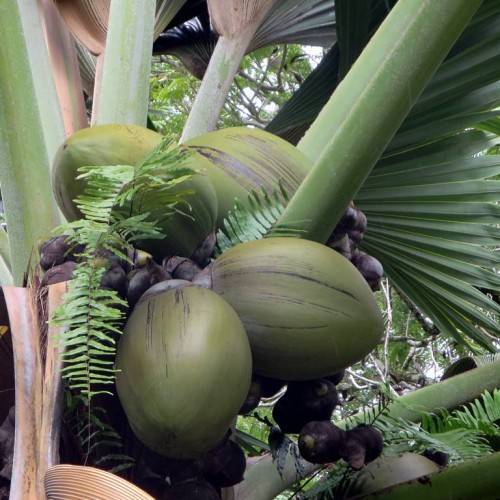
double coconut palm
Lodoicea maldivica
Cycle:
Perennial
Watering:
Average
Hardiness Zone:
10 - 12
Flowers:
Flowers
Sun:
Full sun
Fruits:
Fruits Ready In Summer
Edible:
Yes
Leaf:
Yes
Growth Rate:
High
Maintenance:
Low
Drought Tolerant:
Yes
Salt Tolerant:
Yes
Care Level:
Extreme
watering
Double coconut palm plants typically require thorough yet infrequent watering. Water deeply into the soil once every 10 to 14 days whenever the soil is dry to the touch. Water the base of the palm and allow the water to slowly soak in for 2 or 3 minutes. Avoid overwatering as it can cause root rot. Soil should be kept moist but not soggy or water-logged. When breaking dormancy during winter months, reduce watering frequency to every 2 to 3 weeks.
sunlight
The double coconut palm (Lodoicea maldivica) enjoys bright sunlight. This plant will thrive in direct sunlight for 6 to 8 hours a day, but will still tolerate a few hours of shade or partial shade. These palms also do best in semi-warm climate, with temperatures between 65 to 85 degrees F (18 to 30 degrees C).
pruning
The double coconut palm (Lodoicea maldivica) is native to the Seychelles and is a very slow-growing species with a long life span. As a result, it is rarely necessary to prune this species. In general, it is best to only prune double coconut palms if damage poses a risk to the tree or if the canopy becomes too dense. If trimming is needed, it should be done in the summer or autumn when there is reduced risk of shock to the tree. Dead, diseased, or broken branches should be pruned away any time of the year. It is usually sufficient to only remove a few branches from the crown of the tree, avoiding removal of too much of the canopy.
